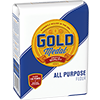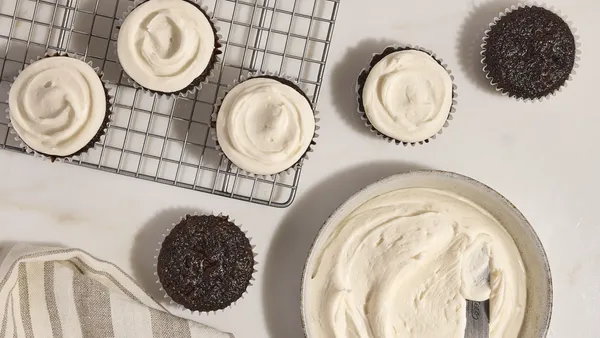Custard Pie
(function() {
document.addEventListener('DOMContentLoaded', function() {
var componentMetadata = JSON.parse('\x7b\x22componentName\x22\x3a\x22RatingAndReviewCounts_2ee1ece6-a33c-4f37-aafb-6377bfa48ff1\x22,\x22deferOptions\x22\x3a\x7b\x22deferComponent\x22\x3afalse,\x22deferType\x22\x3a\x22None\x22,\x22deferId\x22\x3a\x22rb236aff61e8b4400ae81f45871ff5a97\x22,\x22deferredContainerId\x22\x3a\x22\x2fmain\x2frdpRatingAndReview\x22,\x22deferredContainerView\x22\x3anull\x7d,\x22viewName\x22\x3a\x22RatingAndReviewCounts\x22\x7d');
var configuration = {};
var moduleName = 'ratingAndReviewCounts';
var isVueModule = false;
GeneralMills.PandoSites.RegisterControlInstance(moduleName, configuration, componentMetadata, isVueModule)
});
})();
Updated Aug 20, 2018
Bring back memories of Grandma's kitchen with this traditional custard pie in a homemade pastry crust.
More About This Recipe
- Custard pies get their name from the cooked mixture of egg, milk and cream that fills them. This simple list of ingredients means that making your custard pie sweet or savory is actually quite easy. What’s more challenging is getting your custard filling to set correctly. Overcook the eggy mixture and you end up with scrambled eggs. Undercook it and you’ve got a soupy mess to deal with. But Betty’s got it all figured out. Instead of cooking the custard filling on the stovetop, this recipe allows it to set in the oven. This traditional technique dates back to medieval times and guarantees a smooth and rich custard filling every time. And because we believe a pie is only good as its crust, check out Betty’s tips for making perfect pie curst. Once you’ve eaten the last crumb of your custard pie, find your next pie recipe among Betty’s extensive recipe library.
Custard Pie
(function() {
document.addEventListener('DOMContentLoaded', function() {
var componentMetadata = JSON.parse('\x7b\x22componentName\x22\x3a\x22RatingAndReviewCounts_2ee1ece6-a33c-4f37-aafb-6377bfa48ff1\x22,\x22deferOptions\x22\x3a\x7b\x22deferComponent\x22\x3afalse,\x22deferType\x22\x3a\x22None\x22,\x22deferId\x22\x3a\x22rb236aff61e8b4400ae81f45871ff5a97\x22,\x22deferredContainerId\x22\x3a\x22\x2fmain\x2frdpRatingAndReview\x22,\x22deferredContainerView\x22\x3anull\x7d,\x22viewName\x22\x3a\x22RatingAndReviewCounts\x22\x7d');
var configuration = {};
var moduleName = 'ratingAndReviewCounts';
var isVueModule = false;
GeneralMills.PandoSites.RegisterControlInstance(moduleName, configuration, componentMetadata, isVueModule)
});
})();
- Prep Time 30 min
- Total 3 hr 0 min
- Servings 8
- Ingredients 10
Ingredients
Pastry
- 1 cup plus 1 tablespoon Gold Medal™ all-purpose flour*
- 1/2 teaspoon salt
- 1/3 cup cold shortening
- 3 to 5 tablespoons ice-cold water
Filling
- 3 eggs
- 3/4 cup sugar
- 1/4 teaspoon salt
- 1/4 teaspoon ground nutmeg
- 1 teaspoon vanilla
- 2 1/2 cups hot whole milk or half-and-half

Make With
Gold Medal Flour
Instructions
-
Step1In medium bowl, mix flour and 1/2 teaspoon salt. Cut in shortening, using pastry blender (or pulling 2 table knives through ingredients in opposite directions), until particles are size of small peas. Sprinkle with water, 1 tablespoon at a time, tossing with fork until all flour is moistened and pastry almost leaves side of bowl (1 to 2 teaspoons more water can be added if necessary).
-
Step2Gather pastry into a ball. Shape into flattened round on lightly floured surface. Wrap flattened round of pastry in plastic wrap; refrigerate about 45 minutes or until dough is firm and cold, yet pliable. This allows the shortening to become slightly firm, which helps make the baked pastry more flaky. If refrigerated longer, let pastry soften slightly before rolling.
-
Step3Heat oven to 425°F. Roll pastry on lightly floured surface, using floured rolling pin, into circle 2 inches larger than upside-down 9-inch glass pie plate. Fold pastry into fourths and place in pie plate; unfold pastry and ease into plate, pressing firmly against bottom and side and being careful not to stretch pastry, which will cause it to shrink when baked. Trim overhanging edge of pastry 1 inch from rim of pie plate. Fold and roll pastry under, even with edge of plate; flute.
-
Step4Carefully line pastry with a double thickness of foil, gently pressing foil to bottom and side of pastry. Let foil extend over edge to prevent excessive browning. Bake 10 minutes; carefully remove foil. Bake 2 to 4 minutes longer or until pastry just begins to brown and has become set. If crust bubbles, gently push bubbles down with back of spoon.
-
Step5Reduce oven temperature to 400°F. In medium bowl, beat eggs slightly with wire whisk. Add sugar, 1/4 teaspoon salt, the nutmeg and vanilla; mix well. Gradually blend in hot milk. Pour filling into hot crust (to prevent spilling the filling, place pie plate on oven rack before pouring filling into crust).
-
Step6Cover edge of pie crust with pie crust shield ring or 2- to 3-inch strip of foil to prevent excessive browning; remove shield or foil during last 15 minutes of baking. Bake 25 to 30 minutes or until knife inserted halfway between center and edge comes out clean. Cool on cooling rack 1 hour. Serve slightly warm or cold. Store loosely covered in refrigerator.
Nutrition
280
Calories
14g
Total Fat
6g
Protein
31g
Total Carbohydrate
19g
Sugars
Nutrition Facts
Serving Size: 1 Serving
- Calories
- 280
- Calories from Fat
- 130
- Total Fat
- 14g
- 21%
- Saturated Fat
- 4g
- 19%
- Trans Fat
- 2g
- Cholesterol
- 110mg
- 37%
- Sodium
- 350mg
- 15%
- Potassium
- 120mg
- 3%
- Total Carbohydrate
- 31g
- 10%
- Dietary Fiber
- 0g
- 0%
- Sugars
- 19g
- Protein
- 6g
% Daily Value*:
- Vitamin A
- 4%
- 4%
- Vitamin C
- 0%
- 0%
- Calcium
- 8%
- 8%
- Iron
- 6%
- 6%
Exchanges:
2 Starch; 0 Fruit; 0 Other Carbohydrate; 0 Skim Milk; 0 Low-Fat Milk; 0 Milk; 0 Vegetable; 0 Very Lean Meat; 0 Lean Meat; 0 High-Fat Meat; 2 1/2 Fat;Carbohydrate Choice
2
(function() {
document.addEventListener('DOMContentLoaded', function() {
var componentMetadata = JSON.parse('\x7b\x22componentName\x22\x3a\x22RelatedContent_94448f07-2cc5-4f9f-92f7-28bf41024c6b\x22,\x22deferOptions\x22\x3a\x7b\x22deferComponent\x22\x3afalse,\x22deferType\x22\x3a\x22None\x22,\x22deferId\x22\x3a\x22rdb52d1f6f0f544d893754c3648779dde\x22,\x22deferredContainerId\x22\x3a\x22\x2fmain\x2frdpRelatedContent1_NonDeferred\x22,\x22deferredContainerView\x22\x3anull\x7d,\x22viewName\x22\x3a\x22RelatedContent\x22\x7d');
var configuration = {"dataSourceId":"94448f07-2cc5-4f9f-92f7-28bf41024c6b","isCurrentUserAnonymous":true,"isAnonymousUserWithFavorites":false,"relatedContentList":{"contentId":"eb439e5b-41ae-40f9-8b0a-418b27fd2387","listSettings":{"pageSize":3,"startPage":1,"listType":1,"title":"Try These Next","useModalRegistration":false,"regAction":"","esrcCode":0,"favoriteButtonLabelFormat":"Add {0} to favorites","contentTypes":["Category"],"showImages":false,"imageSize":0,"showRatings":false,"allowFavoriting":false,"cssClassName":"relatedContentWithoutImages","favoriteButtonText":""},"items":[{"contentId":"d6730251-314b-484c-9efd-69151eac8690","contentType":"Category","title":"Vanilla Cake Recipes","isFavorite":false,"linkUrl":"/recipes/dishes/cake-recipes/vanilla-cake","numberOfRatings":"0","averageRating":"0","averageRatingStars":"0","smallImageUrl":"/-/media/GMI/Core-Sites/BC/legacy/Images/Betty-Crocker/Recipe-Browse/Dish/Cakes/vanilla-cake-recipes_hero.jpg?W=276","mediumImageUrl":"/-/media/GMI/Core-Sites/BC/legacy/Images/Betty-Crocker/Recipe-Browse/Dish/Cakes/vanilla-cake-recipes_hero.jpg?W=680"},{"contentId":"b05fcac8-9348-40a4-9f3a-60f2c105f934","contentType":"Category","title":"Baking \u0026 Desserts","isFavorite":false,"linkUrl":"/how-to/baking-and-desserts","numberOfRatings":"0","averageRating":"0","averageRatingStars":"0","smallImageUrl":"/-/media/GMI/Core-Sites/BC/legacy/Images/Betty-Crocker/How-To/Baking-Desserts/one-bowl-peaches-vanilla-bean-bundt-cake-hero.jpg?W=276","mediumImageUrl":"/-/media/GMI/Core-Sites/BC/legacy/Images/Betty-Crocker/How-To/Baking-Desserts/one-bowl-peaches-vanilla-bean-bundt-cake-hero.jpg?W=680"},{"contentId":"29e47d4f-9421-4ff6-bc76-67f92e0f955c","contentType":"Category","title":"Gingerbread Cookie Recipes","isFavorite":false,"linkUrl":"/recipes/dishes/cookie-recipes/gingerbread-cookies","numberOfRatings":"0","averageRating":"0","averageRatingStars":"0","smallImageUrl":"/-/media/GMI/Core-Sites/BC/legacy/Images/Betty-Crocker/Recipe-Browse/Dish/Cookies/new/gingerbread-cookie-recipes_hero.jpg?W=276","mediumImageUrl":"/-/media/GMI/Core-Sites/BC/legacy/Images/Betty-Crocker/Recipe-Browse/Dish/Cookies/new/gingerbread-cookie-recipes_hero.jpg?W=680"}],"availableItems":[{"contentId":"d6730251-314b-484c-9efd-69151eac8690","contentType":"Category","title":"Vanilla Cake Recipes","isFavorite":false,"linkUrl":"/recipes/dishes/cake-recipes/vanilla-cake","numberOfRatings":"0","averageRating":"0","averageRatingStars":"0","smallImageUrl":"/-/media/GMI/Core-Sites/BC/legacy/Images/Betty-Crocker/Recipe-Browse/Dish/Cakes/vanilla-cake-recipes_hero.jpg?W=276","mediumImageUrl":"/-/media/GMI/Core-Sites/BC/legacy/Images/Betty-Crocker/Recipe-Browse/Dish/Cakes/vanilla-cake-recipes_hero.jpg?W=680"},{"contentId":"b05fcac8-9348-40a4-9f3a-60f2c105f934","contentType":"Category","title":"Baking \u0026 Desserts","isFavorite":false,"linkUrl":"/how-to/baking-and-desserts","numberOfRatings":"0","averageRating":"0","averageRatingStars":"0","smallImageUrl":"/-/media/GMI/Core-Sites/BC/legacy/Images/Betty-Crocker/How-To/Baking-Desserts/one-bowl-peaches-vanilla-bean-bundt-cake-hero.jpg?W=276","mediumImageUrl":"/-/media/GMI/Core-Sites/BC/legacy/Images/Betty-Crocker/How-To/Baking-Desserts/one-bowl-peaches-vanilla-bean-bundt-cake-hero.jpg?W=680"},{"contentId":"29e47d4f-9421-4ff6-bc76-67f92e0f955c","contentType":"Category","title":"Gingerbread Cookie Recipes","isFavorite":false,"linkUrl":"/recipes/dishes/cookie-recipes/gingerbread-cookies","numberOfRatings":"0","averageRating":"0","averageRatingStars":"0","smallImageUrl":"/-/media/GMI/Core-Sites/BC/legacy/Images/Betty-Crocker/Recipe-Browse/Dish/Cookies/new/gingerbread-cookie-recipes_hero.jpg?W=276","mediumImageUrl":"/-/media/GMI/Core-Sites/BC/legacy/Images/Betty-Crocker/Recipe-Browse/Dish/Cookies/new/gingerbread-cookie-recipes_hero.jpg?W=680"}]}};
var moduleName = 'relatedContent';
var isVueModule = true;
GeneralMills.PandoSites.RegisterControlInstance(moduleName, configuration, componentMetadata, isVueModule)
});
})();
(function() {
document.addEventListener('DOMContentLoaded', function() {
var componentMetadata = JSON.parse('\x7b\x22componentName\x22\x3a\x22RelatedContent_d0ddd5de-c41a-4265-bea6-5cbe7b2b3c2a\x22,\x22deferOptions\x22\x3a\x7b\x22deferComponent\x22\x3atrue,\x22deferType\x22\x3a\x22OnDemand\x22,\x22deferId\x22\x3a\x22r72f3b2ef270c44ed93a0982058ef7720\x22,\x22deferredContainerId\x22\x3a\x22\x2fmain\x2frdpRelatedContent1\x22,\x22deferredContainerView\x22\x3a\x22RecipeDetailRedesign\x22\x7d,\x22viewName\x22\x3a\x22RelatedContent\x22\x7d');
var configuration = {"dataSourceId":"d0ddd5de-c41a-4265-bea6-5cbe7b2b3c2a","isCurrentUserAnonymous":true,"isAnonymousUserWithFavorites":false,"relatedContentList":{"contentId":"eb439e5b-41ae-40f9-8b0a-418b27fd2387","listSettings":{"pageSize":6,"startPage":1,"listType":1,"title":"","useModalRegistration":false,"regAction":"","esrcCode":0,"favoriteButtonLabelFormat":"Add {0} to favorites","contentTypes":[],"showImages":true,"imageSize":1,"showRatings":true,"allowFavoriting":true,"cssClassName":"","favoriteButtonText":"Save"},"items":[{"contentId":"39107a19-be94-4571-9031-f1fc5bd1d606","contentType":"Recipe","title":"Vanilla Buttercream Frosting","isFavorite":false,"linkUrl":"/recipes/vanilla-buttercream-frosting/39107a19-be94-4571-9031-f1fc5bd1d606","numberOfRatings":"595","averageRating":"80","averageRatingStars":"4","smallImageUrl":"//mojo.generalmills.com/api/public/content/JKJn6vxVT8uwy2u6-TK7QQ_webp_base.webp?v=eed8a42b\u0026t=67e847e026fb43aa8d6e3f5ef39a4ef7","mediumImageUrl":"//mojo.generalmills.com/api/public/content/JKJn6vxVT8uwy2u6-TK7QQ_webp_base.webp?v=eed8a42b\u0026t=bafd388ab98747379faa500bac0a675a"},{"contentId":"3af8664b-6c3e-4022-b686-cd961521e59b","contentType":"Recipe","title":"Russian Tea Cakes ","isFavorite":false,"linkUrl":"/recipes/russian-tea-cakes/3af8664b-6c3e-4022-b686-cd961521e59b","numberOfRatings":"1033","averageRating":"90","averageRatingStars":"4.5","smallImageUrl":"//mojo.generalmills.com/api/public/content/x1zqFr_gQGSA25inhNvX-w_webp_base.webp?v=d3a1a852\u0026t=67e847e026fb43aa8d6e3f5ef39a4ef7","mediumImageUrl":"//mojo.generalmills.com/api/public/content/x1zqFr_gQGSA25inhNvX-w_webp_base.webp?v=d3a1a852\u0026t=bafd388ab98747379faa500bac0a675a"},{"contentId":"fd374cd7-3f59-41f4-98d9-05b5e8bfef6f","contentType":"Recipe","title":"Honey Bun Cake","isFavorite":false,"linkUrl":"/recipes/honey-bun-cake/fd374cd7-3f59-41f4-98d9-05b5e8bfef6f","numberOfRatings":"352","averageRating":"90","averageRatingStars":"4.5","smallImageUrl":"//mojo.generalmills.com/api/public/content/h4tokvV9R9qcgfSHmZkJ-Q_webp_base.webp?v=088f4d5a\u0026t=67e847e026fb43aa8d6e3f5ef39a4ef7","mediumImageUrl":"//mojo.generalmills.com/api/public/content/h4tokvV9R9qcgfSHmZkJ-Q_webp_base.webp?v=088f4d5a\u0026t=bafd388ab98747379faa500bac0a675a"},{"contentId":"a2efbfa6-3233-4f7a-bf5b-43ce62bd1055","contentType":"Recipe","title":"Classic Bisquick™ Peach Cobbler","isFavorite":false,"linkUrl":"/recipes/classic-bisquick-peach-cobbler/a2efbfa6-3233-4f7a-bf5b-43ce62bd1055","numberOfRatings":"741","averageRating":"80","averageRatingStars":"4","smallImageUrl":"//mojo.generalmills.com/api/public/content/kd6R5ns1QRu0CrGk81IwMA_webp_base.webp?v=8e3aa868\u0026t=67e847e026fb43aa8d6e3f5ef39a4ef7","mediumImageUrl":"//mojo.generalmills.com/api/public/content/kd6R5ns1QRu0CrGk81IwMA_webp_base.webp?v=8e3aa868\u0026t=bafd388ab98747379faa500bac0a675a"},{"contentId":"554e069d-b269-47f6-bbb9-5bdc24b3695f","contentType":"Recipe","title":"Cream Cheese Frosting","isFavorite":false,"linkUrl":"/recipes/cream-cheese-frosting/554e069d-b269-47f6-bbb9-5bdc24b3695f","numberOfRatings":"66","averageRating":"90","averageRatingStars":"4.5","smallImageUrl":"//mojo.generalmills.com/api/public/content/nK3X4NJaRUOsGZNzW5Ryeg_webp_base.webp?v=d507c85a\u0026t=67e847e026fb43aa8d6e3f5ef39a4ef7","mediumImageUrl":"//mojo.generalmills.com/api/public/content/nK3X4NJaRUOsGZNzW5Ryeg_webp_base.webp?v=d507c85a\u0026t=bafd388ab98747379faa500bac0a675a"},{"contentId":"dee59db0-b964-4002-a5c9-fca08e2ed830","contentType":"Recipe","title":"Tres Leches Cake","isFavorite":false,"linkUrl":"/recipes/tres-leches-cake/dee59db0-b964-4002-a5c9-fca08e2ed830","numberOfRatings":"426","averageRating":"90","averageRatingStars":"4.5","smallImageUrl":"//mojo.generalmills.com/api/public/content/OG26qOUw2EaUUCr9QjoiDQ_webp_base.webp?v=26513738\u0026t=67e847e026fb43aa8d6e3f5ef39a4ef7","mediumImageUrl":"//mojo.generalmills.com/api/public/content/OG26qOUw2EaUUCr9QjoiDQ_webp_base.webp?v=26513738\u0026t=bafd388ab98747379faa500bac0a675a"}],"availableItems":[{"contentId":"39107a19-be94-4571-9031-f1fc5bd1d606","contentType":"Recipe","title":"Vanilla Buttercream Frosting","isFavorite":false,"linkUrl":"/recipes/vanilla-buttercream-frosting/39107a19-be94-4571-9031-f1fc5bd1d606","numberOfRatings":"595","averageRating":"80","averageRatingStars":"4","smallImageUrl":"//mojo.generalmills.com/api/public/content/JKJn6vxVT8uwy2u6-TK7QQ_webp_base.webp?v=eed8a42b\u0026t=67e847e026fb43aa8d6e3f5ef39a4ef7","mediumImageUrl":"//mojo.generalmills.com/api/public/content/JKJn6vxVT8uwy2u6-TK7QQ_webp_base.webp?v=eed8a42b\u0026t=bafd388ab98747379faa500bac0a675a"},{"contentId":"3af8664b-6c3e-4022-b686-cd961521e59b","contentType":"Recipe","title":"Russian Tea Cakes ","isFavorite":false,"linkUrl":"/recipes/russian-tea-cakes/3af8664b-6c3e-4022-b686-cd961521e59b","numberOfRatings":"1033","averageRating":"90","averageRatingStars":"4.5","smallImageUrl":"//mojo.generalmills.com/api/public/content/x1zqFr_gQGSA25inhNvX-w_webp_base.webp?v=d3a1a852\u0026t=67e847e026fb43aa8d6e3f5ef39a4ef7","mediumImageUrl":"//mojo.generalmills.com/api/public/content/x1zqFr_gQGSA25inhNvX-w_webp_base.webp?v=d3a1a852\u0026t=bafd388ab98747379faa500bac0a675a"},{"contentId":"fd374cd7-3f59-41f4-98d9-05b5e8bfef6f","contentType":"Recipe","title":"Honey Bun Cake","isFavorite":false,"linkUrl":"/recipes/honey-bun-cake/fd374cd7-3f59-41f4-98d9-05b5e8bfef6f","numberOfRatings":"352","averageRating":"90","averageRatingStars":"4.5","smallImageUrl":"//mojo.generalmills.com/api/public/content/h4tokvV9R9qcgfSHmZkJ-Q_webp_base.webp?v=088f4d5a\u0026t=67e847e026fb43aa8d6e3f5ef39a4ef7","mediumImageUrl":"//mojo.generalmills.com/api/public/content/h4tokvV9R9qcgfSHmZkJ-Q_webp_base.webp?v=088f4d5a\u0026t=bafd388ab98747379faa500bac0a675a"},{"contentId":"a2efbfa6-3233-4f7a-bf5b-43ce62bd1055","contentType":"Recipe","title":"Classic Bisquick™ Peach Cobbler","isFavorite":false,"linkUrl":"/recipes/classic-bisquick-peach-cobbler/a2efbfa6-3233-4f7a-bf5b-43ce62bd1055","numberOfRatings":"741","averageRating":"80","averageRatingStars":"4","smallImageUrl":"//mojo.generalmills.com/api/public/content/kd6R5ns1QRu0CrGk81IwMA_webp_base.webp?v=8e3aa868\u0026t=67e847e026fb43aa8d6e3f5ef39a4ef7","mediumImageUrl":"//mojo.generalmills.com/api/public/content/kd6R5ns1QRu0CrGk81IwMA_webp_base.webp?v=8e3aa868\u0026t=bafd388ab98747379faa500bac0a675a"},{"contentId":"554e069d-b269-47f6-bbb9-5bdc24b3695f","contentType":"Recipe","title":"Cream Cheese Frosting","isFavorite":false,"linkUrl":"/recipes/cream-cheese-frosting/554e069d-b269-47f6-bbb9-5bdc24b3695f","numberOfRatings":"66","averageRating":"90","averageRatingStars":"4.5","smallImageUrl":"//mojo.generalmills.com/api/public/content/nK3X4NJaRUOsGZNzW5Ryeg_webp_base.webp?v=d507c85a\u0026t=67e847e026fb43aa8d6e3f5ef39a4ef7","mediumImageUrl":"//mojo.generalmills.com/api/public/content/nK3X4NJaRUOsGZNzW5Ryeg_webp_base.webp?v=d507c85a\u0026t=bafd388ab98747379faa500bac0a675a"},{"contentId":"dee59db0-b964-4002-a5c9-fca08e2ed830","contentType":"Recipe","title":"Tres Leches Cake","isFavorite":false,"linkUrl":"/recipes/tres-leches-cake/dee59db0-b964-4002-a5c9-fca08e2ed830","numberOfRatings":"426","averageRating":"90","averageRatingStars":"4.5","smallImageUrl":"//mojo.generalmills.com/api/public/content/OG26qOUw2EaUUCr9QjoiDQ_webp_base.webp?v=26513738\u0026t=67e847e026fb43aa8d6e3f5ef39a4ef7","mediumImageUrl":"//mojo.generalmills.com/api/public/content/OG26qOUw2EaUUCr9QjoiDQ_webp_base.webp?v=26513738\u0026t=bafd388ab98747379faa500bac0a675a"}]}};
var moduleName = 'relatedContent';
var isVueModule = true;
GeneralMills.PandoSites.RegisterControlInstance(moduleName, configuration, componentMetadata, isVueModule)
});
})();
© 2026 ®/TM General Mills All Rights Reserved






